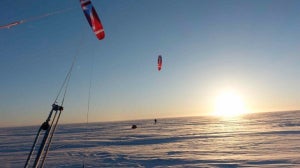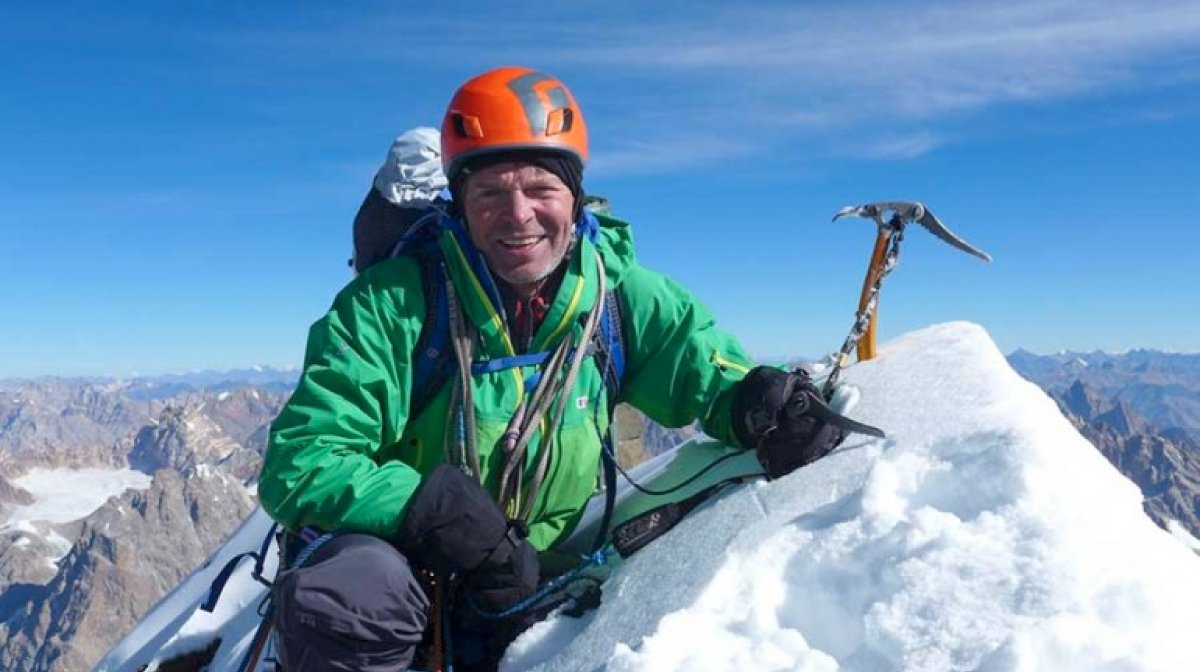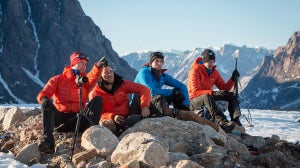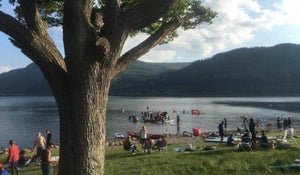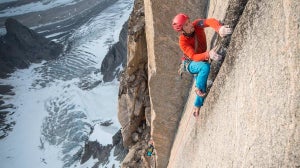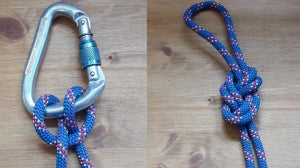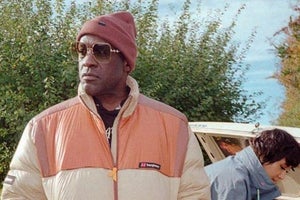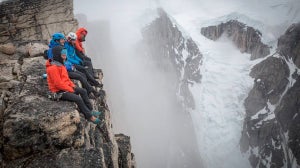
A hypothetical look at which 6 routes might lead one to follow in Mick Fowler’s footsteps up big new routes in the Himalaya.
Imagine our fantasy climber has learnt her skills on the crags of the UK inspired by tales of Mick Fowler’s adventures in the Himalaya they begin to dream of their own expeditions. What progression would her skills have to go through to reach that level? Remember we at Berghaus aren’t recommending you rush out onto the Golden Pillar of Spantik, this is more a virtual challenge, although there is no harm in dreaming.
Point Five Gully, V,5 325m, Ben Nevis, Scotland Mick’s winter climbing started like many with the great classic routes of Scotland. The big Scottish routes such as Point Five on the Ben will get you used to long days on the hill perhaps dealing with less than ideal snow conditions or how to belay in a torrent of spindrift, all crucial skills when you head out to the bigger mountains. The Fly Direct VII,6 240m, Creag Meagaidh, Scotland Mick’s Scottish new routes are the stuff of legend. For a start at the time he was living in London nine or ten hours drive from the Highlands. Despite this Mick would manage each weekend to make the trip up north and bag new line after new line from under the noses of local activists. The Fly was one example and is now one of Scotland’s most coveted ice routes. Mick managed these forays from London thanks to his unlimited enthusiasm and an equally keen group of climbing partners willing to share the drives and early starts. Both key ingredients to success in the Greater Ranges.
Frendo Spur, D sup, 1200m, Aiguille du Midi, France Whilst by no means a route for alpine novices the technical difficulties are moderate compared with the likes of the Fly Direct. What you do get though is the crucial challenge of altitude, rising up to a finish on the Midi Plan Ridge. How you adapt to altitude is likely to be an important factor in any success in the Himalaya. Some people struggle, while some seem to thrive. Mick admits to lying somewhere between the two extremes but his determination has helped him up a lifetimes worth of routes up to the 7000m mark.
The Walker Spur, ED1, 1200m, North Face Grandes Jorasses, France Anyone hoping for Himalayan glory will need to have paid their dues in the Alps on the classic North Faces. Mick has often referred to the Walker Spur as one of his touch stone routes. The Walker Spur was first climbed in 1938 but it remains to this day a long and sustained climb that will test your ability to pace yourself over multiple pitches of technical difficulty.
Taulliraju South Face, ED3, 800m Cordillera Blanca, Peru Routes like Mick’s South Face of Taulliraju make an excellent introduction to extreme greater range climbing in developing countries. Technical difficulties are severe but logistical challenges slight. Peruvian snow conditions can be exciting and you will find it an all round high level test of mountaineering skills. And at 5830m you will definitely be feeling the altitude. A great stepping stone to the Himalaya.
Khumbu Region, Nepal Himalaya A trip to the Himalaya holds numerous hidden hurdles which often get overlooked when thinking about the world’s biggest mountains. There’s the almost inevitable illness, the complications of travel in Asia and the at times bewildering bureaucracy. Survive that and of course you have the challenges of altitude, cold and winds. Mick has always avoided the relatively crowded 8000m peaks opting for untrodden technical peaks between 6 and 7000m, whilst well travelled there is still new ground and only moderate bureaucratic challenge to be found in the Khumbu region.

Related Articles
